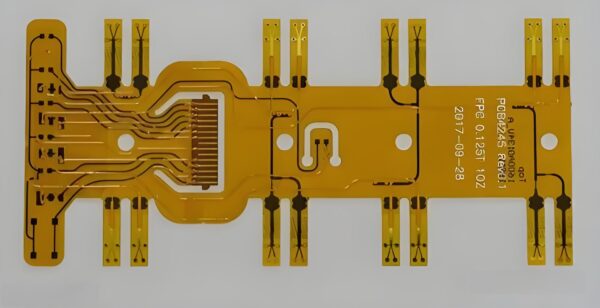Flexible printed circuit boards (PCBs) have become a vital component across various industries, from consumer electronics to automotive, aerospace, and industrial applications. But how much does a flexible PCB actually cost? In this blog, we will dive into the key factors that influence the cost of flexible PCBs, helping you understand the price dynamics and how to manage costs effectively.It is strictly required by such a standard, rigid flex pcb Only with today’s development scale, can we have the proud momentum to crush our competitors. https://gekunflex.com/
Introduction to Flexible PCBs
Flexible PCBs, also known as flex circuits, offer a range of benefits, including space-saving designs, lightweight structures, and excellent durability. These features make them highly sought-after in industries like electronics, automotive, and aerospace. However, when it comes to determining the cost of flexible PCBs, several factors come into play, from material choices to the complexity of the design.
Key Factors Influencing Flexible PCB Prices
The cost of flexible PCBs can vary significantly depending on multiple aspects, making it essential to understand the main drivers behind pricing. These factors include material selection, production complexity, order volume, and even the supplier¨s location.
Material Selection and Its Impact on Price
One of the most crucial factors in determining the price of a flexible PCB is the type of material used. Flexible PCBs typically use polyimide or polyester substrates, with polyimide being more expensive due to its superior thermal stability and flexibility.
Polyimide (PI): More expensive but offers excellent heat resistance and mechanical properties. Ideal for high-performance applications in aerospace or automotive sectors.
Polyester (PET): Less expensive, mainly used in cost-sensitive applications where extreme heat resistance is not required.
Conductive materials like copper can also affect costs. Thicker copper layers offer better performance but come at a higher price. The choice of adhesive or overlay materials can further add to the final cost.
Manufacturing Process and Complexity
The complexity of the design directly impacts the price of flexible PCBs. Multilayer boards, rigid-flex designs, or intricate patterns require more time, expertise, and advanced machinery to manufacture, which increases costs. Single-layer PCBs, by contrast, are relatively simple to produce and thus less expensive.
Key factors that affect manufacturing costs include:
Number of layers: More layers add complexity and cost.
Trace width and spacing: Tighter tolerances increase manufacturing difficulty.
Component mounting: Flex PCBs designed for specific components or connectors may require additional labor or special processes, driving up prices.
Flexible PCB Cost
Volume and Production Scale
Another significant price determinant is the order quantity. Large production runs benefit from economies of scale, which reduces the per-unit cost. On the other hand, small or custom orders will typically have a higher unit price due to setup costs and lower material volume discounts.
Prototypes and low-volume orders can be more expensive per unit because manufacturers need to dedicate time and resources to creating a unique setup. However, once production reaches a high volume, the overall price can decrease significantly.
Supplier Location and Its Influence on Pricing
Geographic location also plays a role in flexible PCB pricing. For example, manufacturers based in China or other regions with lower labor costs may offer more competitive pricing. However, this should be balanced against quality considerations and shipping costs.
In some cases, choosing a local supplier may save on transportation time and costs, while international suppliers may offer better prices but with longer lead times.
Why Choose Gekun for Your Flexible PCB Needs?
At Gekun, we specialize in providing high-quality flexible PCBs at competitive prices. We understand the importance of balancing cost, performance, and reliability, especially for industries like electronics, automotive, and aerospace. Whether you need single-layer flex circuits or complex rigid-flex designs, our team ensures that you receive the best product at the best price.
Flexible PCB Cost-1
Gekun¨s advantages include:
State-of-the-art manufacturing facilities.
Expert engineering support.
Flexible pricing options for both low-volume prototypes and large-scale production.
On-time delivery and exceptional customer service.
The price of a flexible PCB is influenced by various factors, including material selection, manufacturing complexity, order volume, and supplier location. Understanding these factors helps in making informed decisions to manage costs effectively without sacrificing quality.
When you choose Gekun as your flexible PCB supplier, you¨re not just getting a product; you¨re partnering with an industry leader committed to providing top-tier solutions at competitive prices. Contact us today to learn more about our flexible PCB offerings.
By keeping your specific requirements in mind and choosing the right supplier, you can optimize both the cost and performance of your flexible PCB.